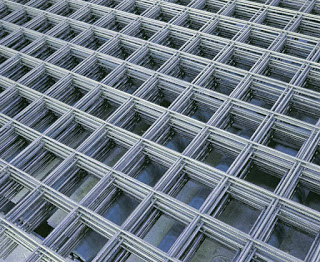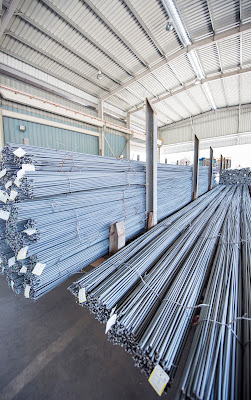Listed below are some ways to bend rebar:
Bend Rebar by Hand (Pipe)
Bending rebar by hand, or manually bending it, is the most fundamental way of bending rebar. It is also the safest and most straightforward approach. The steel rod must first be encased in two sections of metal tube.
After that, thread the steel bar through both pipe segments and let them intersect at the bend point.
Weigh one end of the metal piping and display the portion of the rebar you wish to bend on the other end. To elevate the longer piece of pipe off the floor, use leverage.
A sufficient amount of manpower/force is required to bend solid rebar. Although the leverage you'll obtain from a large piece of pipe will aid in speeding up the operation.
You'll need to measure the angle now that you've let the bar to bend. A carpenter's square will assist you in measuring the bending angle.
One of the most crucial elements in the process is angle control. Rebar is used in a variety of ways, each of which necessitates a distinct angle. You may easily achieve the appropriate angle if a third person holds the carpenter's square while bending.
This method of bending rebar has its limitations.
Bars with a big diameter cannot be bent.
You can't bend rebars with a lot of force, either.
This approach also causes damage to the rebars at the point of bending.
Bend Rebar with Hickey Bar
This technique is akin to bending bars with your hands. A hickey bar is a metal bar with three studs or fingers on it. It's also known as a three-pin bar bender.
The purpose of these studs is to keep the rebar in place. The bar measures approximately 34 inches in length and weighs approximately 4 pounds. To bend the reinforcement bar, it works on the concept of increasing torque. It is popular due to its compact size and portability.
The hickey bar's handle is meant to exert a lot of pressure on the rebar in order to bend it. Its application necessitates the use of two bars, as one is insufficient to bend the bar.
You can always use a flame and a grinder to repair one of the studs if it breaks. You can always use a hacksaw to reduce the length of the bar.
The procedure begins with the rebar being laid flat on the ground.
Using one of the hickey bars, hold it in place. Hold it such that the rebar is able to pass through two of the studs. Remember to bend the rebar using two hickey bars. Use the second hickey bar to hold the bar in place once again.
The bar will bend at the distance between the two holdings. As a result, the closer the distance, the more precise the bent point will be. Apply pressure on the second hickey bar now. This will generate torque, making bending the bar a breeze.
Controlling the angle is crucial. It would be beneficial if a second person could examine the angle of bend during the process with a measuring square.
It has its benefits, but it also has some drawbacks.
You can't utilize it if you're at Grade 60 or higher.
The distance between the studs also influences the bar's maximum diameter.
It usually can't bend bars wider than 5/8 inch.
Bend Rebar with a Portable Rebar Bender
Now we'll move on to semi-automatic and automatic machines. On construction sites, the portable rebar bending machine is often utilized. A power bender is another name for it.
Before making a purchase, there are a few things to consider. Bender capabilities, power requirements, cost, and machine time are all factors to consider.
This equipment bends rebars quickly and without compromising their strength. They are simple to use and move.
It is powered by both electricity and hydraulics. Rebar of various sizes and grades can be bent in a variety of ways. You can even bend rebars coming out of walls and columns using this equipment. Many of its versions are available in a rebar cutter and bender combination. Many jobs become much easier as a result of this.
There aren't many steps in the process. Turn the machine on and set the rebar in the grasp. In 4 seconds, the hydraulic press will bend the bar. The machine has a 180-degree bending capability. It has the ability to bend up to 1-inch bars. These are a tad pricey, but they are necessary when accuracy and quickness are required.
It's possible that using them in the rain will cause the motor to burn out or malfunction. Exposure to dirt or mud might shorten the life of the machine. Do not use rebars that are larger than the machine's capacity. Failure to maintain the machine will also cause it to break down.
Looking for rebars, or reinforcement steel bars? Get in touch with Gulf Steel today to learn more.

